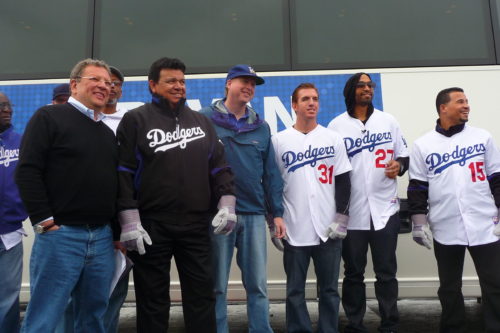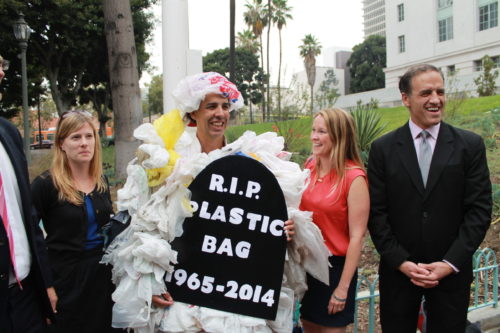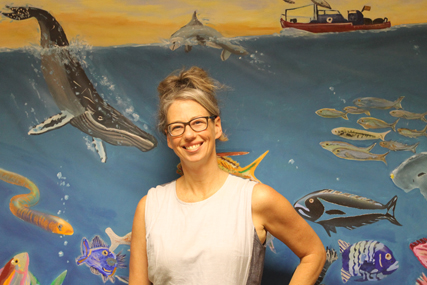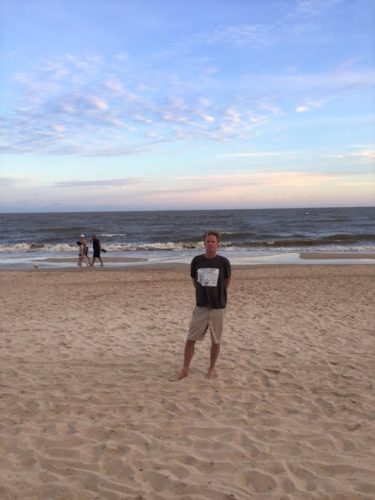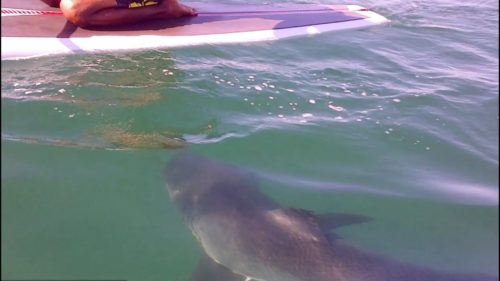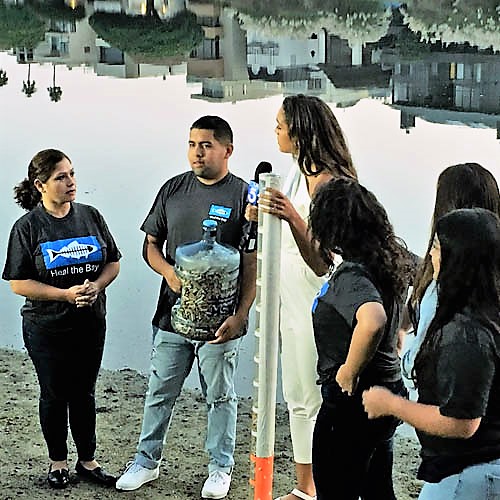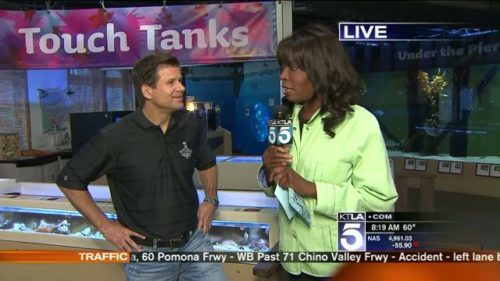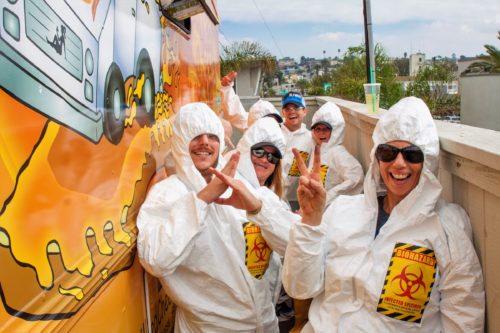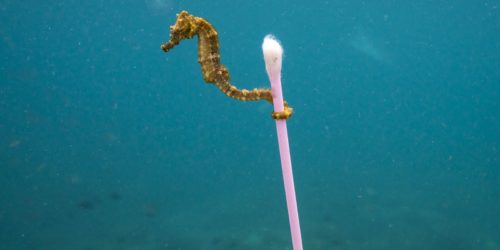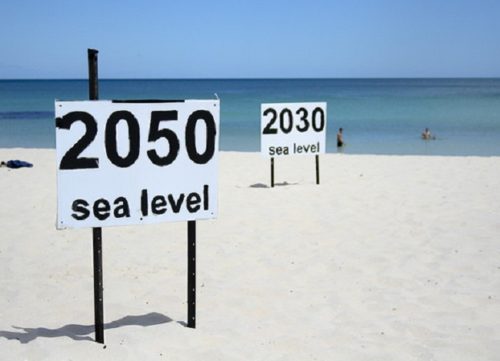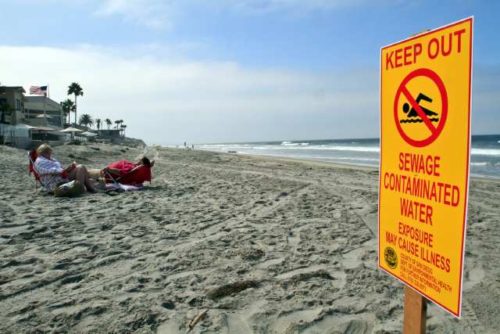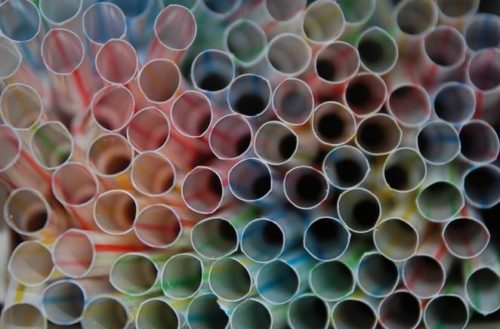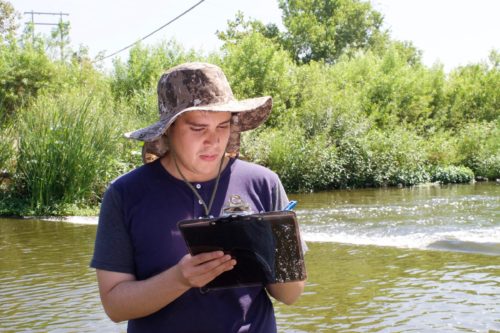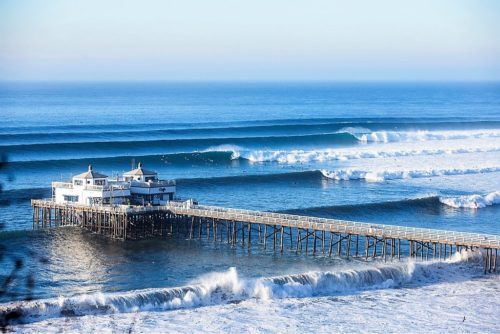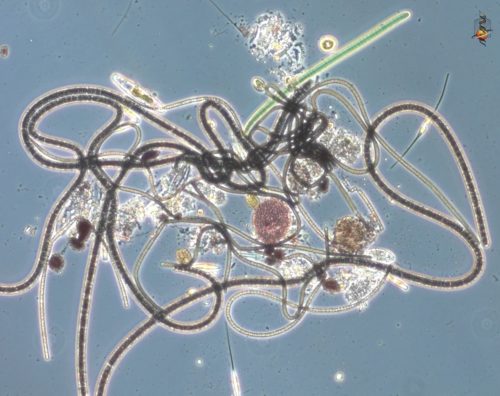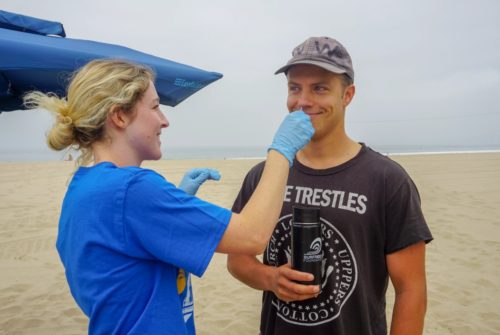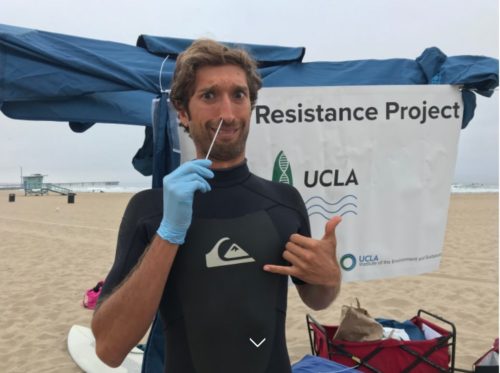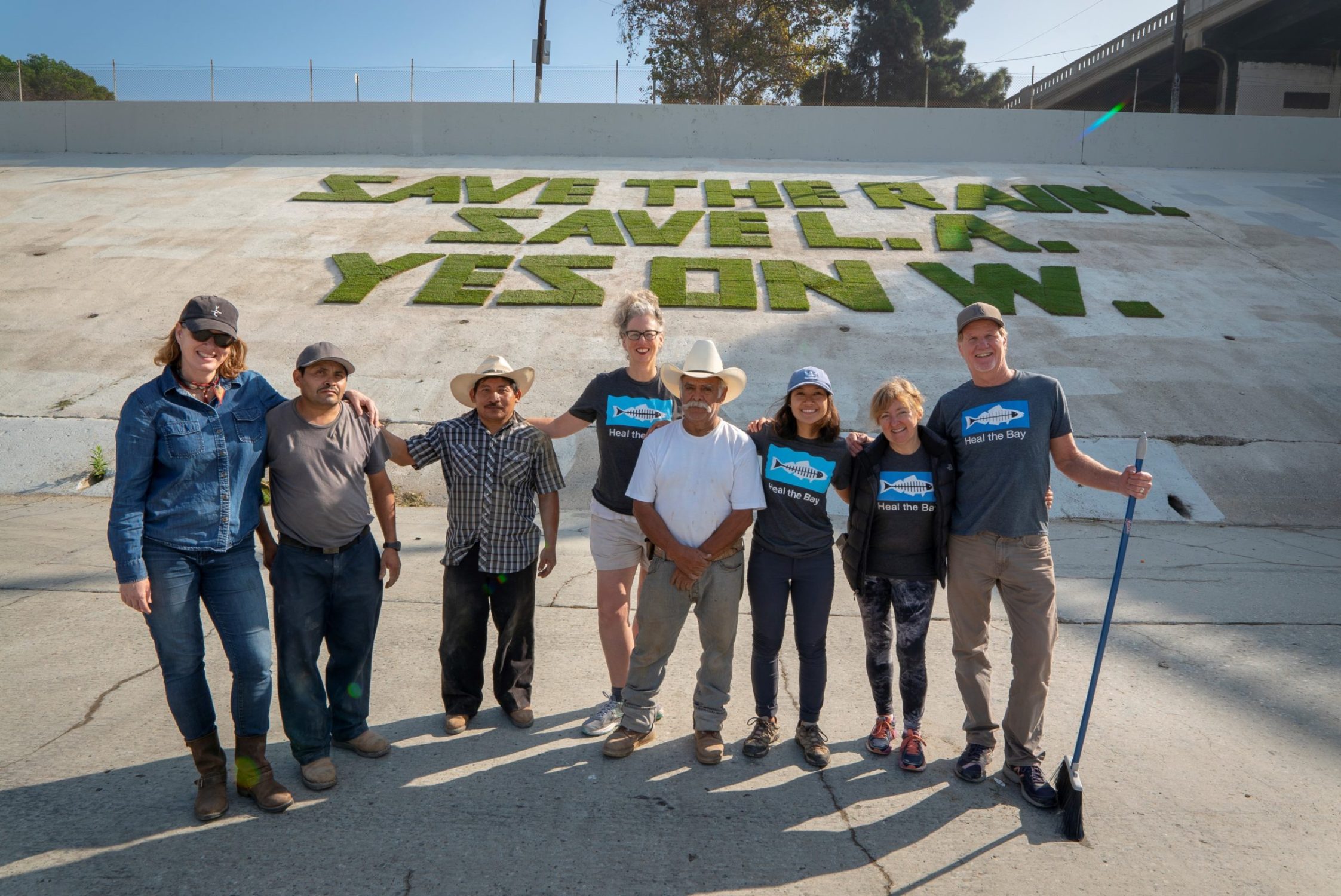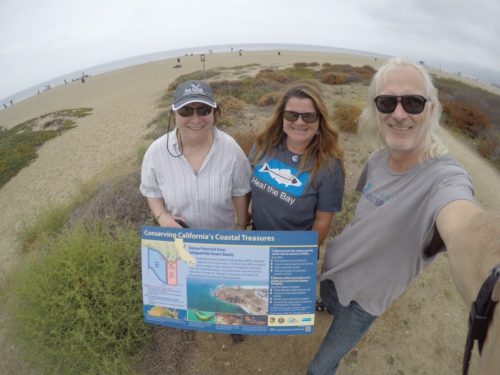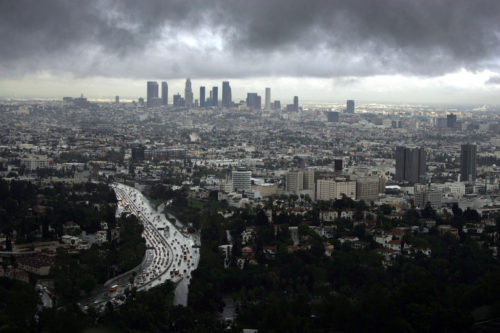
This November, voters in L.A. County will decide whether to approve Measure W, a public funding measure to capture, treat and reuse stormwater throughout the region. Through a modest parcel tax, $300 million in funds would be made available for cities to build a lattice of nature-based projects throughout the region, such as green streets, wetlands and parks that capture and store rain and runoff. The measure would increase local water supply, improve water quality, provide more open space and reduce trash along our shorelines.
Here, Heal the Bay and our partners L.A. Waterkeeper and Natural Resources Defense Council address many of the misconceptions that have been raised by opponents of this common-sense measure.
MYTH: It hardly ever rains in Southern California. We don’t need to spend millions to capture a few sprinkles each year.
FACT: We can capture and reuse billions of gallons of stormwater and other runoff each year in L.A. County, enough to meet the needs of 2.5 million Angelenos.
In the decades to come, climate change means that greater L.A. will whipsaw from drought to floods to drought. We must use our wet years to ensure we have enough clean water when the dry ones come. Even on the driest day in August, tens of millions of gallons of runoff flow to the sea each day. During a single storm, up to 10 billion gallons of this liquid gold runs through our stormdrains and into the ocean. We need to capture, clean and reuse water – every drop, every day of the year.
MYTH: We’ve got enough water right now. We’ve got bigger problems to fix.
FACT: We take water for granted – at our own peril.
With climate change worsening, extended periods of drought in our region are a given. We’ve got to stop importing 70% of our water at great cost and expense of fossil fuels. It’s just not smart. We now have a once-in-a-generation opportunity to replumb our region and source more water locally. Water is the lifeblood of our city. Let’s not waste it.
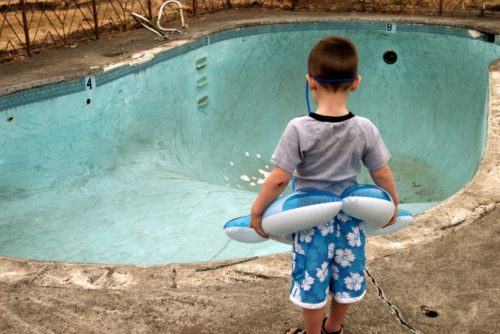
MYTH: This sounds like a good idea. But we simply can’t afford it right now.
FACT: The measure will pay dividends for years to come, saving taxpayers money in the long run. The average property owner would pay $83 a year to improve water quality and boost water supply.
With our current system, we are literally pouring water – and money – down the drain each day. This measure will provide a smart return-on-investment in four specific areas:
- Enhanced public health: Hundreds of thousands of beachgoers each year get sick from swimming in runoff-polluted beaches in L.A. County each year, at a cost of nearly $200 million.
- Reduced regulatory costs: L.A. County is on the hook for an estimated $24 billion over the next two decades to meet strict water quality mandates set by the State Water Control Board.
- Lower water costs: Importing water from up north is expensive and unreliable – and it only will get worse as climate change takes hold.
- Improved economy: Dirty beaches, trashy rivers and polluted water are not conducive to tourism; we need to protect the value of greater L.A.’s $16 billion coastal economy.
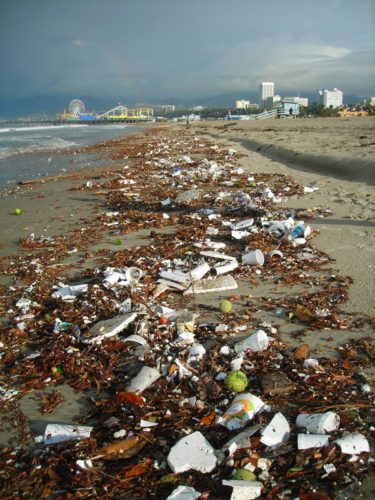
MYTH: No one knows where the money will actually go. It will disappear into a rabbit hole in the General Fund.
FACT: Some 455 specific projects have already been identified by cities to help green L.A.
Some of the region’s best engineers have devised these multi-benefit infrastructure projects as part of watershed management plans that L.A. County cities must implement as a part of their stormwater permit. These projects have been approved not only by local cities, but by our regulatory agencies. We have the data-driven blueprints; now we need the funding to turn smart vision into reality.
MYTH: This is yet another financial burden on low-income communities and seniors on fixed incomes.
FACT: Low-income senior citizens would qualify for exemption from the Measure W parcel tax.
Low-income communities face the same penalties for not complying with the federal Clean Water Act, but they lack the resources to meet requirements. Measure W provides funding for small-scale or community projects, for technical assistance and for stormwater education programs. Priority will be given to projects that benefit disadvantaged communities to assist in reaching compliance and avoiding federal fines.
MYTH: The measure penalizes property owners who have already made improvements capture rain or reduce runoff on their parcels.
FACT: Measure W includes a credit program for those who have already reduced runoff on their property (or commit to do so).
If you already installed a cistern that captures runoff from your roof, your roof no longer counts as a taxable impervious surface, and your tax estimate will go down. If you installed stormwater capture projects that eliminate runoff from your property entirely, and capture additional runoff from your neighborhood, you may receive a tax credit up to 100% of your original tax estimate.
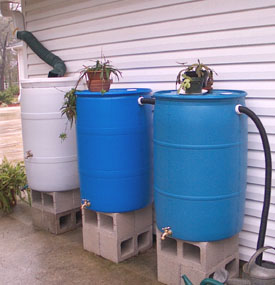
MYTH: There is no mechanism to make sure the money is spent correctly.
FACT: A citizens oversight committee will provide transparency and accountability.
Each city will be given flexibility in spending the 40% of funds raised that go back to municipalities, while annual reporting and audit requirements will ensure it is spent responsibly on appropriate projects. The 50% of funding going to regional projects is awarded competitively and has even more stringent requirements to ensure responsible spending. Five separate committees will ensure that funding is given to projects that meet required criteria and that there is a 110% benefit return to disadvantaged communities. Spaces are reserved on the Watershed Area Steering Committee for a wide array of stakeholders, including community, environmental and business voices.
MYTH: We would all pay this tax, but it will only benefit a few people in certain areas.
FACT: All communities in greater L.A. will benefit from Measure W.
The measure will fund a wide range of project types and sizes, from neighborhood to regional in scale. The program allocates funds to areas in proportion to the taxes generated in that area. The combination of municipal programs (40% of tax revenue), regional projects (50% of tax revenue — with 110% benefit return to disadvantaged communities), and a requirement for a range of projects sizes will provide an equitable distribution of funds and an equitable distribution of benefits.
MYTH: This is a forever tax, with no “sunset clause.”
FACT: The Board of Supervisors can eliminate the funding measure in 30 years.
The tax is set at 2.5 cents per square foot of impervious surface on a given parcel. That price will never increase with inflation, which means that its value (and relative cost to the taxpayer) will decrease over time. After 30 years, property owners will pay the equivalent of approximately 1 cent per square foot, at which time the tax will be up for review by the Los Angeles Board of Supervisors. By this time, operations and maintenance will account for the vast majority of spending, so that cities do not have to dip into their general fund to keep these projects going for years to come.
MYTH: Green projects cannot reduce flood risk as well as gray infrastructure like concrete stormdrains and channelized rivers.
FACT: Nature works.
Many cities around the world are using nature-based projects to capture stormwater. Many of these initial projects are showing that green streets, wetlands and infiltration parks do reduce flood risk, while also providing many other benefits to its community. Portland, Ore., and Philadelphia are already using green solutions to meet the challenges in their rain-intensive communities, such as flooding and erosion. Here in L.A. County, the Elmer Avenue Neighborhood project has dramatically reduced flooding along streets used by residents and local school children.
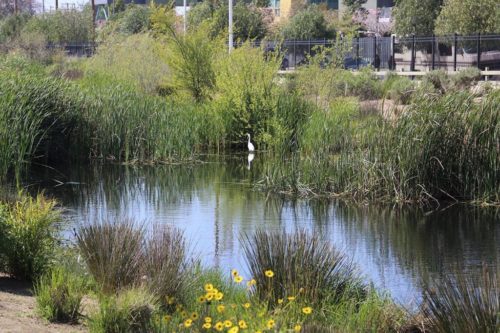
MYTH: The taxing of individual property owner’s permeable surface is an arbitrary and unfair method for addressing the region’s stormwater issues.
FACT: A parcel tax is the fairest way for addressing the problem of stormwater runoff.
Fees based on the amount of impermeable surfaces make sense because they correlate directly to the source of polluted runoff. Property owners can implement project that capture their stormwater on-site to reduce their tax burden. The average parcel tax is estimated at $83, but property owners can go to a County website to determine their annual assessment. They can also appeal if they think their parcel tax is determined inaccurately.
